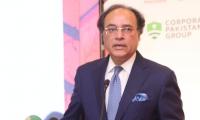Domestic Resource Mobilisation (DRM) is the process through which governments raise much-needed funds for development, alleviating poverty and delivering public services.
DRM is the foundation of self-sustaining development. DRM is about equitably taxing the full potential of a country through efficient tax systems and administrations. It ensures a manageable fiscal balance: a key component of macro-economic stability. DRM has a major bearing on the amount of new public debt added each year to a country’s economy. Thus, after economic growth, DRM is by far the single most important determinant of economic prosperity and independence.
In Pakistan, DRM mirrors the economic growth trajectory of a downward slide. Pakistan’s own endeavours to design and execute improvements in DRM have been unexciting at best. This has created an environment where disproportionate effort is made on raising debt monies. In addition, policy space is being sucked by Pakistan’s reliance on foreign-funded support, in the shape of development programs and projects, leading to multilateral funding dependent on fulfilling program conditionalities.
Consequentially, under these programs, economic growth in Pakistan continues to be muted, sacrificing aggregate supply objectives, with considerable negative outcomes for poverty and possible inflationary impact. A delegated policy landscape can and should be altered for improved social and economic outcomes.
The upside potential for DRM in Pakistan is more than substantive. Let us put the local context into perspective for our discussion. Targets for DRM are traditionally set at higher levels to inspire a bigger effort – a logical strategy. There has been a certain sense that the targets for domestic revenue generation by the Federal Board of Revenue (FBR) of Rs4,435 billion for FY19 and Rs5,555 billion for FY20 were steep and hence unachievable at the outset. At a cursory glance, the target for FY20 signalled rather less optimism, requiring growth in collection of 33.8 percent from the revised estimated collection of FY19 of Rs4,150 billion.
As always, the devil is in the detail. Budget FY20 inundated new taxes of Rs750 billion. The real tax growth to achieve Rs5,555 billion thus only required a rather realistic effort of 15.7 percent increase in tax collections from an estimated Rs4,150 billion for FY19. The nominal growth for FY20 of about 11 percent also was supportive. However, the final collection for FY20 was rather disappointing at Rs3,996 billion with 4.3 percent growth from the actual collection of Rs3,828 billion in FY19.
A key indicator over the two years can sum it up for us – the FBR tax-to-GDP ratio has slipped from 11.2 percent in FY18 to 9.5 percent in FY20. Quarter one of FY21 also indicates a slight decline of 0.1 percent in FBR tax-to-GDP ratio compared to same period last year. This trend is a clear and a present concern.
The shortfall in collections for the past two fiscal years amounts to a whopping $13.6 billion at today’s exchange rate. Just to put in perspective, the approved funding under the current IMF program is merely $6 billion mired in conditionalities of pricing changes and stabilization. Imagine if we had collected even half of the two-year shortfall of Rs2,166 billion – an additional Rs1,083 billion. Certainly, our federal development expenditure could have been substantively increased pushing, both, job creation and growth higher.
Let us also dispel another impression that increased tax rates, widening of tax base and more taxes are vital to help the government to collect more. The state of play gets more interesting once we see the tax potential of the country – simply understood as the maximum amount of tax revenue a country could reasonably raise at a given point in time, if every taxpayer was fully compliant with existing tax law.
A World Bank study in 2019 has highlighted Pakistan’s tax revenue potential at 26 percent of GDP based on FY18 data. The estimated tax-to-GDP ratio for FBR for FY21 stands at 10.6 percent. The critical task is to reduce this tax gap – the difference between Pakistan’s potential and actual tax collection (taxes owed and taxes paid on time).
By raising the tax compliance to 75 percent (a realistic level for Lower Middle Income Countries), Pakistan’s total tax collection could be around Rs12,000 billion for FY21. The FBR’s target for FY21 is pitched at Rs4,963 billion – a mammoth difference from Pakistan’s real tax potential. Essentially, the issue is one of tax compliance. Strengthening the capacity at the FBR to audit and enforce can have the highest impact in this regard. However, the heavy burden of compliance cannot only be put on the tax collection machinery. It has to be equally shared by the citizens, businesses, multinational enterprises, limited liability companies and sole proprietorships that are either evading or are partially compliant.
Considering the above, we have to be optimistic regarding Pakistan’s fiscal framework and our ability to reduce the rising debt-to-GDP ratio. Whenever the country decides to push hard, the upside is unlimited. That we are ‘in the money’ is a contention we should be surely comfortable with. The good news from our analysis is that finance is not the real issue; never has been, never will be. It is our ability to organize ourselves to get hold of the finance that has been, is and will remain the real issue.
The above picture is primarily of existing DRM possibilities. This should be reason enough to continue to be hopeful on Pakistan graduating to a good normal.
The writer is former advisor, Ministry of Finance, Government of Pakistan.
Email: khaqanhnajeeb@gmail.com
Twitter: @KhaqanNajeeb
An aeroplane of the national flag carrier of Pakistan is seen in this file photo. — AFPWhile Pakistan considers...
Representational image of a graph depicting various variables. — APP/FileInitiated by the centre and fiercely...
In this picture taken on April 16, 2023, people throng a market area during shopping in Lahore. — AFPOne of the...
Honour crimes also target men. In Sikandar Ali Lashari vs The State, SHC upheld conviction passed by ATC for honour...
If Sindh earmarks Rs20 million per police station, it will cost only Rs10 billion to make them effective first...
A complex and difficult policy environment seems to be highlighted by US’s recent application of sanctions on...







